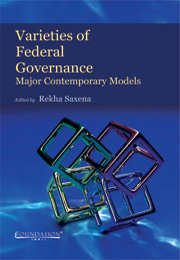Book contents
- Frontmatter
- Contents
- List of Contributors
- Foreword
- Acknowledgements
- Introduction
- I Theoretical and Comparative Dimensions
- II Presidential Federal Systems
- III Commonwealth Parliamentary Federations
- IV Non-Commonwealth Parliamentary Federations in Afro-Asia
- 13 Multi-ethnicity and Federalism: Constitutional Provisions in the Federal Democratic Republic of Ethiopia
- 14 Federalism and Political Inclusion: Choices facing Nepal
- V European Parliamentary Federations
- VI Devolutionary Systems
- VII Supranational Confederalism/Federalism?
13 - Multi-ethnicity and Federalism: Constitutional Provisions in the Federal Democratic Republic of Ethiopia
from IV - Non-Commonwealth Parliamentary Federations in Afro-Asia
Published online by Cambridge University Press: 05 June 2012
- Frontmatter
- Contents
- List of Contributors
- Foreword
- Acknowledgements
- Introduction
- I Theoretical and Comparative Dimensions
- II Presidential Federal Systems
- III Commonwealth Parliamentary Federations
- IV Non-Commonwealth Parliamentary Federations in Afro-Asia
- 13 Multi-ethnicity and Federalism: Constitutional Provisions in the Federal Democratic Republic of Ethiopia
- 14 Federalism and Political Inclusion: Choices facing Nepal
- V European Parliamentary Federations
- VI Devolutionary Systems
- VII Supranational Confederalism/Federalism?
Summary
Introduction
Comparing Ethiopia with other countries on the African continent, one can observe similarities and distinctiveness. Unlike any other sub-Saharan country, Ethiopia has never been colonized by any European country and unlike most other African countries, Ethiopia opted for a federal political system in the 1990s after the end of the military rule. While most African countries are also characterized by significant ethnic and religious diversity, most of these countries discarded the idea of federalism as a principle of state organization. The question why Ethiopia opted for a federal system and how the distinct features of the Ethiopian federal system can be explained and understood is the focus of this chapter.
Comparing Ethiopia with other federal systems, one will come across a number of features which are rarely found elsewhere. The founding on ethnic groups and the constitutional interpretation through the Upper House of Parliament can be mentioned as examples. It can be argued that the institutional set-up of the federal system can be explained to a large part by Ethiopia's history. Using assumptions of institutionalism this chapter will try to explain the specific characteristics of the Ethiopian case. Since institutionalism as theoretical framework has been discussed at length, it will not be discussed again in this chapter. The following section will briefly outline historical events which are assumed to be of explanatory value for the development into federalism. Thereafter the specific characteristics of the Ethiopian federal Constitution will be explained and discussed.
- Type
- Chapter
- Information
- Varieties of Federal GovernanceMajor Contemporary Models, pp. 263 - 281Publisher: Foundation BooksPrint publication year: 2011
- 1
- Cited by



